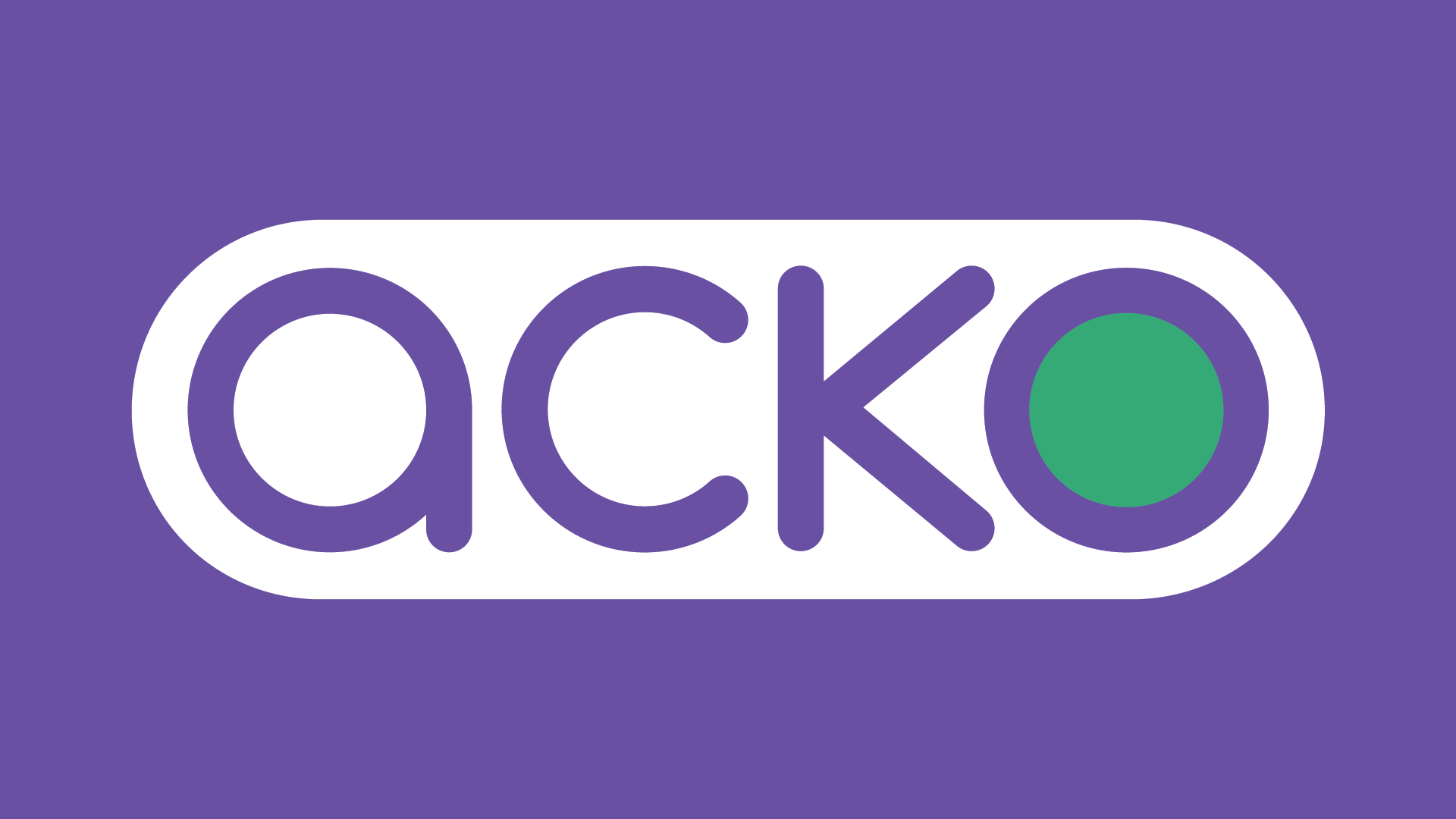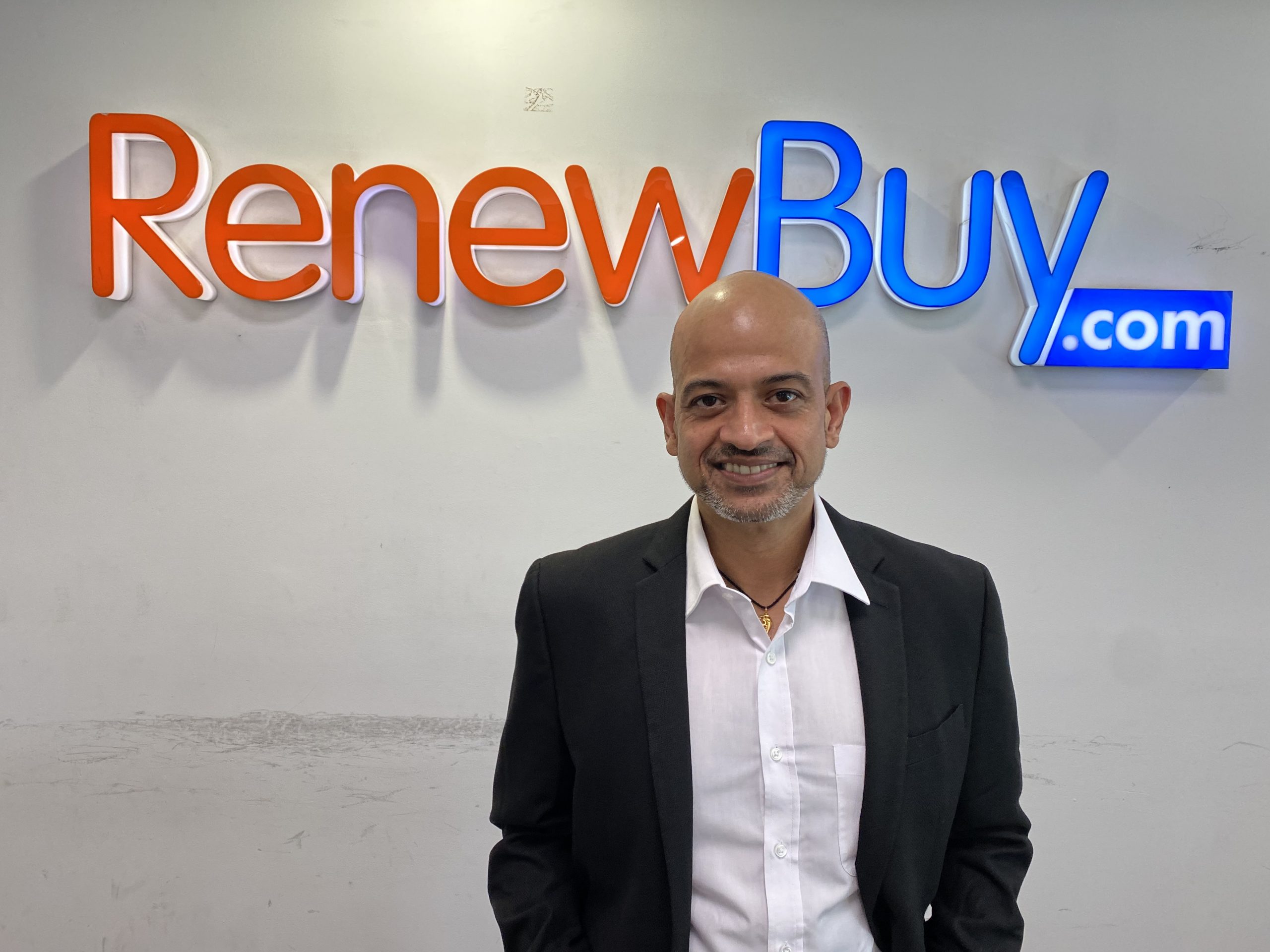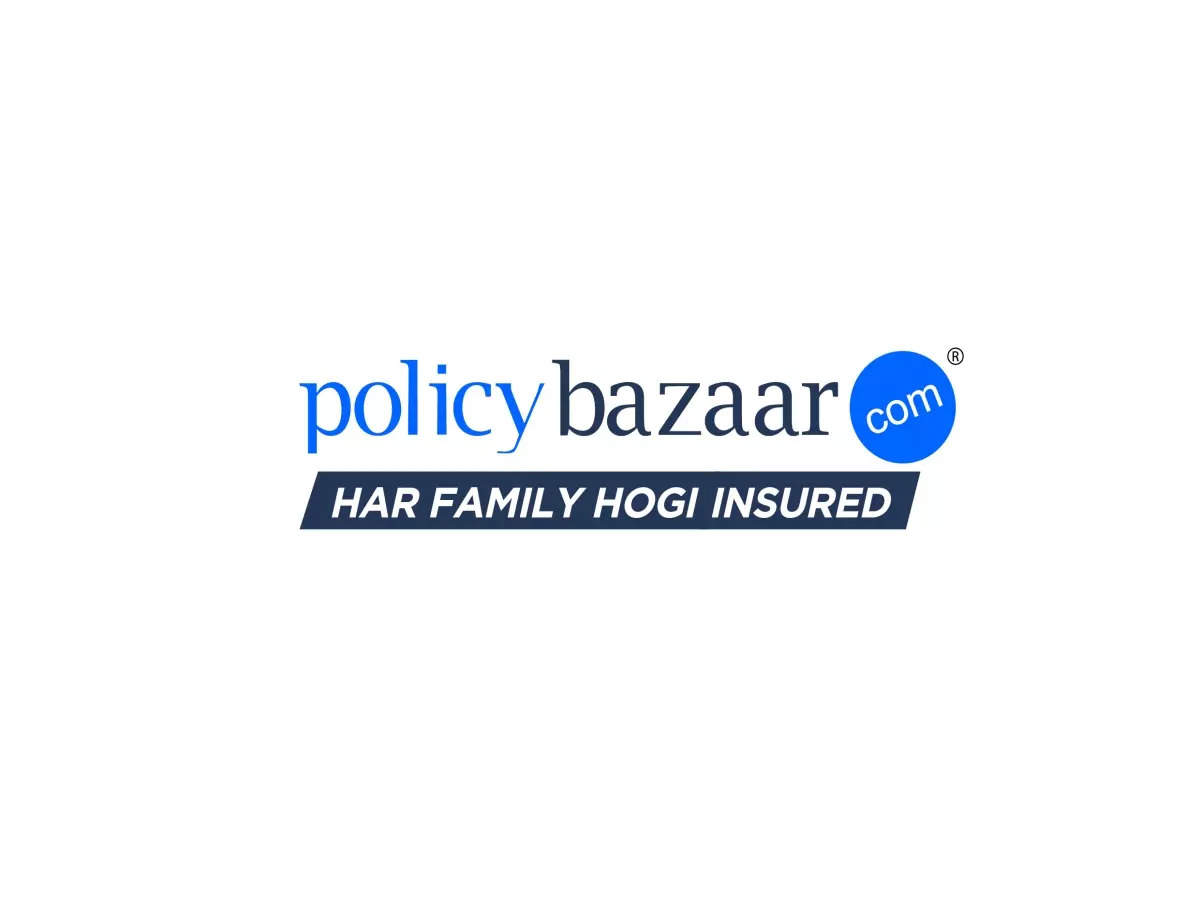Top 10 Best Insurtech Companies In India In 2023.

Despite technological progress, incumbent insurers continue to use antiquated policies and paperwork. This is no longer applicable to today’s consumers.
Because of the gap between traditional-insurance policies and changing market dynamics, young InsurTech companies have the opportunity to innovate and take risks. India has 142 technology-based insurance startups, according to Technologies.
Here are the top ten insurance startups in India, in no particular order. As a result of the pandemic, insurers in India and around the world are prioritizing technology initiatives and implementing digital solutions as soon as possible. Collaborations between the insurance industry and insurtech are becoming more common. Industry players have developed product strategies to thrive in emerging ecosystems.
Insurtechs used investor capital to build a solid data and analytics foundation as policyholder expectations changed in the aftermath of the outbreak. Intelligent artificial intelligence (AI), predictive modeling, the internet of things (IoT), connected devices, then open APIs, and open insurance models are being implemented, which is resulting in a growing customer base. Customers’ intent to purchase insurance increased by nearly 7% as a result of pandemic anxiety.
According to the report, traditional insurers will also focus on gaining a competitive advantage through underwriting, product development, and claims management. InsurTechs will play a larger role in the rest of the value chain.
Top 10 Indian Insurtech Companies:
1. Pazcare
Pazcare is one of the best places to get group health-insurance, group term life insurance, group personal accident insurance, group covid insurance, employee mental wellness, doctor consultation, and much more. They were established in 2021 and have already simplified insurance purchasing and management for 400+ customers.
According to IRDAI, Pazcare is the most trustworthy InsurTech company for simplifying insurance for founders and HR professionals. Because they believe that employee care should be simple.

Characteristics of Pazcare-
- Pazcare offers a personalized dashboard for employers to keep track of active group insurance policies.
- Employee dashboard: Employees can view and manage their employee benefits through Pazcare’s dashboard.
- Super-top-up: This feature allows employees to voluntarily increase their insurance coverage, which remains in effect even after the employee leaves the company.
- Pazcare makes claim processing easier. Pazcare assists HRs and employees with claims by making the process more efficient and user-friendly.
2. Digit Insurance
The company, founded in 2016, specializes in general online insurance. All aspects of health, automobiles, mobile phones, travel, bicycles, and jewelry are covered.
The Bangalore-based company has raised a total of $100 million in funding since its inception.

Digit Insurance Characteristics
- Digit Insurance streamlines the insurance purchasing process. Because the documentation process has been simplified, Digit’s policies are simple to understand.
- It also implemented a smartphone self-inspection process, which cut claim settlement time in half.
- CB Insights’ global list of the Top 250 FinTechs includes Digit as the only Indian insurance company. Furthermore, in 2018 and 2019, LinkedIn named Digit as one of the top Indian startups.
3. Acko General Insurance
Acko, a startup disrupting the auto insurance-industry, was founded in 2017. Data analytics and low-cost insurance products are two of its InsurTech solutions.
Acko can help you ensure that your car or bike is completely and third-party secure. Through a partnership with Ola Cabs, micro-insurance services are also available. In 2019, Acko reported total funding of $43 million. The company is headquartered in Mumbai.

Acko General Insurance’s key differentiators
- Acko also allows customers to purchase insurance policies entirely online at low prices in a short period of time.
- The program also includes hourly vehicle pick-up for repairs and immediate claim settlement for minor damages.
- Acko insurance is already used by over 2.5 crore Indians. More than that of 95% of customers are satisfied with the service.
4. PolicyBazaar
Policy Bazaar, founded in 2008, was one of the first startups in the InsurTech sector. The company’s website provides access to insurance policies. PolicyBazaar makes it simple to compare insurance policies on the basis of price, benefits, and quality.
The Gurgaon-based company has raised $372 million in funding from a variety of investors.
PolicyBazaar’s key differentiators
- By comparing policies, customers can make an informed decision.
- Customers believe that PolicyBazaar provides better customer service than contacting insurers directly. It includes a wide variety of insurance-policies. Customers have already received coverage worth 10L crores from the company.
5. OneAssist
In recent years, OneAssist has emerged as a leading provider of insurance products. The company offers appliance insurance as well as data-protection.
This startup addresses the growing problem of identity theft, the dark web, and cyber-risks in the internet era. OneAssist is headquartered in Mumbai and was founded with a $32 million investment.

OneAssist’s distinguishing features
- OneAssist’s Identity Risk Calculator, an innovative tool, alerts internet users to potential threats.
- Customers can use the company’s long-term repair and protection services for a variety of items such as home appliances, gadgets, mobile phones, and tablets.
- They have OEM contracts (Original Equipment Manufacturers).
6. PolicyBoss
The PolicyBoss insurance marketplace is another online insurance marketplace. The app allows users to compare and purchase insurance policies.
Since its inception in 2012, PolicyBoss has received a total of $10 million in funding. Insurers are an important distribution channel for PolicyBoss. It has offices in 24 Indian cities, with its headquarters in Mumbai.

PolicyBoss’s key differentiators
- Customer service, claim assistance, and advisory services are all provided by the company. Over 300,000 Indian customers have already benefited from its services.
- PolicyBoss hopes to connect insurance policies and their holders/customers by utilizing the brokerage platform.
- Throughout the policy term, the company negotiates with the insurer on its clients’ behalf and notifies them of any unusual circumstances.
7. InsureFirst
InsurFirst, which was founded in Kolkata in 2016, is distributed by Aviva Life, ICICI Prudential, and SBI.
It now offers health insurance, auto insurance, life insurance, home and asset insurance, travel insurance, and investment plans to individuals.

This insurance covers marine, fire, business interruption, commercial vehicles, contractor risks, workers’ compensation, and trade credit as corporate risks.
InsurFirst’s unique selling points
- The company offers customized insurance plans to meet the needs of its clients. Customers cannot use this innovative system to purchase a package or an expensive policy.
- Over 60 million INR in premiums have already been sold across 3000 policies by the company.
8. CoverFox
CoverFox, India’s leading insurance startup, was founded in 2011. Customers can buy and renew insurance policies using a simple, fast, and secure platform.
It also serves as a reliable platform for resolving claims. It was able to raise $42 million in funding.

Several insurance companies have also provided funding to the company, including Saif Partners, IFC, Catamaran, Accel Partners, and TransAmerica.
CoverFox’s distinguishing features
- CoverFox believes that its simple language and robust algorithm make policy documents easier for customers to understand.
- Insurers can provide customers with instant quotes, which speeds up the purchasing process.
- Having won several awards, including the Smart CEO award and being named one of the top ten Fintech companies.
- In 2016, and 2017, CoverFox received Fintech Asia and Business World Techtors awards. It has more than 30 insurance partners and more than 50 lakh customers.
9. Paytm InsuranceTM
PayTM first appeared as a digital wallet in 2010. Paytm Life Insurance Ltd and Paytm General Insurance Ltd are its insurance subsidiaries.

PayTM Insurance’s main characteristics
- Customers can use a centralized platform to pay their premiums and purchase insurance.
- The smallest questionnaire with the customer claims to provide straightforward refunds on policy cancellations.
- Customers can use the website’s simple interface to enter their preferences and view insurance plans based on their search criteria.
10. RenewBuy
Automobile insurance is available through RenewBuy, a brokerage platform. Various insurers provide real-time quotes on the forum.
Gurgaon is home to the majority of the company’s operations. A total of $15 million has been raised thus far.

RenewBuy’s Differentiating Features
Customers can instantly compare and purchase auto and health insurance plans from leading insurers using RenewBuy. Additionally, the platform automates agent onboarding.
TurtleMint began in 2015 as an online insurance-aggregator. Currently, the company serves the life insurance, health-insurance, and automobile insurance industries. The company is headquartered in Mumbai, India.
TurtleMint’s unique selling points-
- It is a wise decision to purchase insurance plans through TurtleMint.
- Leading insurance-companies can be contacted directly through its interface, removing the need for time-consuming paperwork. Over 3 million-policies have been sold online through this startup.
- The insurance industry is being transformed by InsurTech.
Traditional insurers’ product development methods are changing as a result of new tools and applied technologies. Insurers can use InsurTech to do the following:
- Improve the actuarial and underwriting decision-making processes;
- Enhance your customer service.
- Analyze advanced data to maximize its value;
- To save money, improve operational efficiency.
Technologies that support the insurance industry’s capabilities and offerings, as well as processes throughout the value chain, provide game-changing solutions. Here are a couple of examples:
- Predictive analytics apps for acquiring customers, assessing risks, and developing policies.
- Brokers can merely sell short-term insurance products through any kind of distribution channel by using white-label platforms.
- Improving underwriting quality and efficiency through the use of computer vision and geospatial imagery.
For example, the use of artificial intelligence and data science to detect fraud.
Data can be exchanged more effectively and then modernly thanks to all of the innovations.
InsurTech: Challenges and Opportunities
Mobile apps, telematics, Big Data, machine-learning, artificial intelligence, and cybersecurity are all areas where insurance technology development is critical. The insurance industry will adapt to the global-trend of selling everything online.
Data is being exchanged between insurance companies and their customers. Clients’ health data is tracked using specialized devices that integrate intelligent home systems.
Remote trackers are now used to analyze all significant health indicators and provide health information to patients. Using this data, insurance companies can predict accidents. These technologies will primarily affect the auto insurance market, and possibly health insurance in the future.
Factors in the emerging market that support insurtech
Insurtech and technology-enabled business models will be critical to the expansion of insurance in emerging markets, given their enormous growth potential. However, technology is not a cure-all.
People in developing countries, particularly those with lower incomes, are more likely to begin their insurance journey with health or life insurance rather than auto, renters, or property insurance in mature-markets. Insurtech has the potential to make a positive impact due to the following factors:
Third-party liability insurance for motor vehicles is required. Pedestrians injured in motor vehicle accidents should be aware of this if they have automobile (motor) insurance. It also enables insurance companies to sell additional products based on their insurance knowledge. It would be ideal if the market was not taxed to reward good driving.
Financial expertise. Emerging markets are not the only countries facing challenges. The vast majority of individuals and small business-owners are uninformed about the risks they face and may lose all of their savings as a result of events such as illness or business loss due to disasters such as floods or fires. Web-based advice and education, gamification, and chatbots are just a few of the ways the insurance technology sector can help. However, literacy should be taught to children at a young age so that they understand the value of saving and borrowing, as well as the various options for accumulating and protecting wealth. Banks and microfinance institutions must also be involved.
Fraud is a major source of higher costs for honest consumers, particularly in the health insurance industry. Despite the fact that it is not required, it has been discovered that this type of identification removes a significant barrier to the development of better insurance solutions in India and some African countries.
WIFI and mobile network access are required if you want to record and upload data at some point during the day. For example, in the event of a drought, ACRE Africa allows farmers to replant after 21 days without rain. The program, which compensates farmers for replacement seed through M-PESA mobile banking, is activated by entering the unique code found on the seed packet.
Payment mechanisms Mobile payments for premiums and claims reduce fraud, lower costs, and speed up the process.
Digital signatures are accepted. Wet signatures are also unnecessary, but they slow down the process and add friction. We also recommend that regulators accept digital signatures as society becomes more digital and mobile. Other sources of Know-Your-Customer (KYC) data, such as mobile phone networks (MTN) or banks, can be used.
Insurtechs are driving global and Indian innovation.
Insurtechs have pushed the boundaries of innovation as the landscape has evolved, offering newer value-added services and opening up large ecosystems of players. The following are the four dimensions of innovation:
1. addressing the needs of niche segments, contexts, and new generations
They provide insurance in a small package for specific needs or circumstances. The emphasis is on small transactions with point-of-consumption protection, such as air travel or e-commerce. Digital commerce is driving demand for new products tested by Insurtechs across industries. If this trend continues, it may result in a significant shift in consumer perception of insurance as a rare, large-ticket purchase.
Niche products are created to meet the needs of millennials. Insurance products are available for pets and short-term rental hosts, for example. A new demand space is forming.
This is due to increased digital consumption, more efficient targeting and distribution (complicated by a traditional offline distribution model), or new requirements with evolving demand spaces.
Insurtech companies either develop niche products or introduce a slew of new ones.
The ability to transition from prevention to protection using products. Companies are increasingly attempting to improve the health outcomes of their customers while lowering claim costs. New offerings are being developed using virtual care and more sophisticated health tech devices. Consumers’ trust in the efficacy of tele/digital health solutions is growing, making COVID-19 a significant step forward.
One method of protecting against loss-causing events is the concept of parametric insurance. Data-driven parametric insurance has complemented traditional life insurance because it can capture more data. More sensors, data, and thus more sophisticated modeling, for example, are driving the development of various weather-based products.
2. Solutions and services related to insurance
Insurtechs (and insurers) are also shifting toward value-added services.
They plan to open a one-stop shop to offer customers a more comprehensive “one-stop” solution. Around the core, Haven Life, for example, has integrated services such as document vaults, will creation, and so on. Large financial ecosystems, on the other hand, offer a wide range of services. The ability to reduce acquisition costs, operating costs (as well as fixed costs as the company scales), claim expenses, and credit risks is one of the key triggers for the development of these ecosystems. Ping An Group is an example of a Chinese ecosystem that offers services other than insurance.
Insurtech is also developing B2B services, with a focus on mature solutions for insurers and other businesses.
3. Data-driven innovation considers the entire value chain.
As a result, Insurtechs (and insurers) are increasingly focusing on data capture and analytics to maximize the value of their data. In addition to sharper pricing and underwriting models, such models are likely to have a wide range of other applications. Differential pricing on auto insurance, for example, based on driving habits, is becoming more common. Many previously underserved areas, such as crop insurance, have grown in popularity as a result of the use of satellite and sensor data (for example).
Businesses also rely heavily on analytics to detect and prevent fraud in a variety of areas, such as acquisition, claims assessment, customer service, and personalization. In the Insurtech landscape, there are numerous use cases for AI-driven capabilities, such as increasing sales conversions, leveraging machine learning to improve claim efficiency with images, and improving pattern recognition for fraud detection.
4. Improving the experiences of customers, channel partners, and employees
Experience for consumers, employees, and channel partners is critical in addition to increasing adoption and innovation. Many B2C Insurtech firms excel at seamless customer onboarding, providing maximum transparency with minimal fuss, which significantly contributes to their NPS scores.
The organization has prioritized channel partner effectiveness in addition to improving channel partner experience and effectiveness. Several companies are experimenting with intelligent sales platforms and sales assistant apps that are tightly integrated with internal systems.
Rise Of Insurtech
According to the latest State Of Indian Fintech Report Q2 2022 from Inc42, India’s Insurtech industry has a $339 billion market opportunity that is expected to grow at a 57% CAGR by 2025. It is a graphical representation of an investment’s rate of growth over a given time period. This means that insurtech investments will generate a 57% compound return on investment between 2021 and 2025. Insurtech startups had a banner year in 2021, with 34 startups raising a total of $822 million in funding.
The pandemic demonstrated that health insurance is not an option. Families had to dip into their savings to cover hospital bills and other healthcare expenses. This realization, combined with a focus on mental health, has changed the face of group health insurance in India. Organizations are now making conscious efforts to ensure the overall well-being of their employees. Health insurance is no longer sufficient on its own. In 2022, comprehensive employee-well-being packages will be the starting point, including regular check-ups, mental-health counseling, and customized fitness offerings.
The insurtech market is classified into five major segments:
- Digital brokers include PolicyBazaar, Ditto, TurtleMint, and Paytm.
- For example, Nova Benefits is a corporate insurance broker.
- Insurance SaaS companies like Ensuredit and Riskcovry
- Two digital insurance underwriters are Acko and Digit.
- Even Kenko and Health Clubs
The report claims that the rise of insurtech is being fueled by a shift in consumer preferences as well as a massive increase in funding. Since the pandemic, there has been an increase in demand for insurance products. Other factors influencing growth are as follows:
Better Distribution – Digital brokers like PolicyBazaar have turned the B2C model inside out. You can easily compare and choose from a variety of insurance products. The rise of B2B2C players such as Nova Broking is expanding access to efficient and cost-effective products.
Technology for the greater good – Technological advancement has increased reach and conversion. The identification and targeting of new customers has also benefited from data analytics.
Customized Products – More data equals more insight. The insurtech sector has quickly embraced personalization of health and wellness products. This has further improved insurance underwriting and pricing propositions.
The emergence of the National Health Stack – When compared to global leaders, India’s insurance penetration is extremely low at 4.2% (in 2019, Taiwan had the highest insurance penetration at 20%, followed by South Africa and Korea at 14% and 11%, respectively). The national health stack will help increase insurance penetration, which will be further aided by the expansion of digital infrastructure.
New beginnings
In India, the insurtech sector is still in its infancy. Startups cannot be sustained solely through digitalisation. Other important factors to consider are:
Expansion – Following the pandemic, demand for health insurance increased in tier 2 cities such as Nagpur and Raipur. Year after year, the trend is expected to accelerate.
Personalization – Consumer behavior is rapidly changing. A healthy lifestyle is becoming increasingly popular. It is critical to adapt to changing consumer behavior and provide tailored products.
Innovations in underwriting, introducing tech-enabled distribution frameworks, and providing comprehensive post-sales services will take center stage as the segment grows.
The grass, however, is not entirely green. Regulations and compliance are challenging to meet. It is frequently difficult for new market entrants to enter. Technology-led solutions are also met with skepticism, particularly in tier 2 and 3 cities. The majority of Indians are still unaware of emerging segments such as neobanks and cryptocurrency. Furthermore, a lack of financial and technological literacy stifles growth.

Why is insurtech growing?
Experts believe that the increased occurrence and documentation of both global and hyper-local disasters, such as the Beirut explosion, Cyclone Amphan, Australian wildfires, and, of course, the coronavirus pandemic, has permanently altered consumer risk perception.
While traditional insurance companies bore the brunt of these disasters, they also acted as industry tailwinds. Consumer demand for health and term life insurance in India is at an all-time high, and this trend is being replicated in Southeast Asia and Africa. Even previously obscure segments in India, such as property insurance, are seeing massive demand, according to industry experts.
Property and casualty (P&C) insurance was the most-funded insurtech category in 2020, accounting for $3.4 billion, or roughly 45% of total funding, according to Boston Consulting Group. Health insurance ($2.1 billion, 29%) was followed by multiline insurance ($1.6 billion, 22%) and life insurance (approximately $300 million, 4%).
Insurtech is one of India’s most promising sectors due to the ease of pricing one’s own risk, paying a small fee that guarantees a much larger payout, and the convenience of purchasing insurance through an app.
According to a BCG report, the expanding sector will attract more than $7.5 billion in global deals by 2020, making it one of the fastest growing sub-sectors in fintech. This momentum is expected to accelerate significantly in 2021.
In many consumer markets around the world, including India, insurance is a novel concept. Those who have been following China and Zhong An, a pioneer in this space, will recognize the opportunity.
Mega funding rounds have resulted in a significant increase in risk investors’ desire for a stake in these companies. Around the world, the insurtech sector is experiencing unprecedented funding rounds.
The three largest rounds in 2020, according to BCG, were:
Bright Health, which offers individual, family, and medical plans in 43 markets in 13 states across the United States, has raised $500 million in a Series E round.
Ki Insurance, a fully digital and algorithm-driven insurance syndicate incubated by the British government, Google, and the University College London, has raised $500 million in private equity.
Hippo, an American digital insurer, has raised $350 million in a Series E round.
Other notable recent investments include Berlin-based Wefox’s $650 million round, which valued the company at $3 billion. Young insurgency firms are going public in the United States, in addition to raising funds at high valuations.
Lemonade Inc. went public last year, backed by SoftBank, and now has a market cap of $6.5 billion. Others, such as Palo Alto-based home-insurance tech startup Hippo, plan to go public by combining with a $5 billion SPAC, or special purpose acquisition company.
Zhong An, based in China, was the first to define the online-only insurance segment, and similar platforms have since emerged in the United States, Europe, and India.
The insurance industry has grown in tandem with the economy. Each time there has been a significant advancement in technology, the industry has responded with new products, new distribution methods, and new risk assessment methods. The Fourth Industrial Revolution has reached another tipping point, and the cycle is repeating itself. The last decade may have seen more technological innovation than the previous five decades.
Back in the 1950s, insurance companies were among the first to use mainframe computers. The smartphone of today is thousands of times more powerful than those early machines, and customer data is now stored in the cloud rather than on a carrier’s premises. Similarly, communication capabilities have increased exponentially, and as 5G mobile networks emerge over the next decade, even more transformative technologies, such as drones and autonomous vehicles, will become more feasible. Each of these changes has called long-held industry assumptions about business and operating models, organizational structures, and market strategies into question.
There are numerous paths to victory, but you must choose one. Many good ideas exist in the InsurTech space, and many young companies have exceptional people and technology. While many alliances appear appealing on paper, foresighted leaders understand the importance of asking why—and then asking again. Investors and other stakeholders prefer insurance companies with a well-coordinated strategy that includes everyone from carriers and third-party administrators to technology vendors, agents, brokers, and others.
There are new sources of value. For many years, the premium collection model for distributed risk was fairly static, but InsurTech firms are now moving forward with pay-per-use, a focus on loss prevention, restorative services, and other innovations. Legacy carriers can learn from startups by abandoning some of their “truths.”
What was once thought to be a sign of success may no longer be. Buyers no longer associate the term “large” with trust or stability. Larger organizations are not required to be more bureaucratic than smaller businesses, but they frequently are. Similarly, if insurers are not cautious when collaborating with InsurTech firms, their size and often more stolid culture can actually destroy the value that a collaboration promised.
Now, more than ever, speed is critical. People anticipate same-day delivery and credit decisions in under 60 seconds. They also anticipate prompt underwriting decisions, claim adjustments, service requests, and even product development. InsurTech companies can frequently assist carriers in delivering these benefits to customers and prospects if both parties share a common goal and understand their respective roles in achieving it.

The Insurance Technology Environment
Every year, the InsureTech Connect conference brings together legacy companies and tech-driven startups from all industries. To provide core systems and components, pure technology firms use the software as a service (SaaS) model. Companies sell AI-powered predictive analytics as well as risk assessment services that incorporate new data sources. Other InsurTechs focus on distribution, telematics, underserved niche markets, comparative pricing, and broker services, among other things. The sheer number of companies that have emerged to support (or compete in) the insurance space reflects the desire for change as well as the potential opportunities.
These opportunities extend far beyond the front desk. Insurers and many InsurTech firms are turning to technology companies that provide more generalized business support, such as cloud computing, intelligent automation, human resource systems, loyalty programs, workflow management, and other services.
Whether you lead a legacy provider or a startup, you have many options to consider. Having too many options, on the other hand, can be distracting or even harmful, such as receiving 2,000 search results for sneakers when all you want is one pair. The best way to cut through the noise is to look internally first, identify your strengths, and assess how you can build on them.
The majority of today’s problems will be solved through the use of technology. To improve services and customer experiences, the insurance industry requires the use of applied technologies. Technical decisions affect financial health and growth. Discover how InsurTech applies to the insurance industry’s new business models for innovation—looking for a way to differentiate your insurance company? InsurTech is the answer.
Insurtech’s Advantages
The advantages of insurtech for consumers and insurers are numerous:
For the Customer
Consumer empowerment: Insurtech is driven by consumers and allows them to assign monetary value to any aspect of their lives. It enables the inclusion of family, friends, and community members in comprehensive coverage. Consumers are involved in the entire process, from registration to claims, and they can even choose who sits on the claims jury panel for a hearing. Customers benefit from this increased level of knowledge and engagement.
Convenience and accessibility: Most consumers today do all of their work on their cell phones. When it comes to insurance, they expect the same mobile convenience. Insurtech is mobile-friendly, allowing consumers to compare, verify, and make decisions from the comfort of their own homes. They can check the status of claims from their personal devices, saving both consumers and insurers time.
Increased security and customization: With insurtech, companies implement stringent anti-spam and security policies to ensure consumer trust when transacting online. It also enables the insurance company to collect and analyze data from clients, allowing for improved offerings and customized products.
For Insurance Companies
- Insurtech has the potential to save the insurance industry both time and money:
- Save time and money by preventing fraud, particularly in the areas of customer identity verification and anti-money laundering.
- Simplify underwriting by automating data collection and incorporation into records.
- Introduce newer insurance distribution methods, such as peer-to-peer (P2P) insurance, in which groups of customers pool their premiums as insurance against any risk.
- Smart contracts that go beyond traditional claims can be used to promote innovative new products.
- Reduce errors by automating claims and automatically enforcing contracts.
- Insurtech’s Most Important Applications
Here are a few examples of key insurtech applications:
Customer Identity Verification
The Know-Your-Customer (KYC) process is an important aspect of customer identification that insurance companies, reinsurers, and brokers must complete. To verify identities, insurers must collect all counterparty information, which means dealing with a large amount of data. Insurtech can provide much-needed relief in this situation. Blockchain has been used by some insurtech companies to create prototype software that stores customer identification details from issuing authorities. This gives the insurance company, reinsurer, and broker complete control over all customer records.
Claims Management
Companies can use blockchain technology to create standardized claims documents that are evaluated in real time by underwriters. They can also automate smart contract elements, ensuring flexible and transparent execution. Customers’ and insurers’ relationships are strengthened as a result.
Smart Contract Design
Smart contracts use automated protocols that make it simple to authenticate, negotiate, and even enforce documents when necessary. In the case of a life insurance policy payout, the system automatically searches online death registers, determines the validity of the claim, and initiates the payout—all without bothering the bereaved family. Smart contracts improve the speed and accuracy with which claims are cleared. Companies can register contracts, perform authentications, and clear claims much more quickly without the assistance of an assessor. This reduces the possibility of fraud while increasing customer satisfaction.
Detecting Fraud and Preventing Risk
A significant number of claims are false. Historically, the investment required to effectively manage fraud has been extremely high. Companies can use insurtech to detect and eliminate fraud with a decentralized digital depository. This validates the individual and the claim, protecting against duplicate transactions or third-party interference, and making all transactions public record.
Processing of Payments
Insurance companies must be able to integrate premiums and claims. Auto insurance policyholders, for example, receive payments based on the number of miles driven. A telematics system installed inside the vehicle tracks these miles in real time, allowing the premium to be calculated and paid. This not only makes the process easier, but it also reduces errors.
Insurance is one of the oldest financial businesses, and it can assist both people with extensive market experience and those with deep pockets. In the past, broad actuarial tables were used to assign a risk category to assigned policy seekers. Later, the group is adjusted to gather a sufficient number of people, ensuring that the policies adopted by companies are profitable for them. Some people will have to pay more than they should under this approach. Insurtech is the best option for making this process easier and more affordable.
Insurtech enables you to perfectly address data and analysis issues. With the use of inputs from various types of devices such as GPS tracking of vehicles, activity trackers on smart devices or wristwatches, and so on. Insurtech firms are creating risk classifications that allow their products to be priced competitively.
Because insurtech is a new concept, there are numerous apps that are constantly being developed. This means that insurtech is a strategy that can improve and streamline the system’s backend processes while also improving the customer experience. This helps the insurance company save money.





